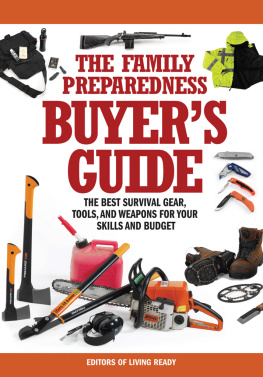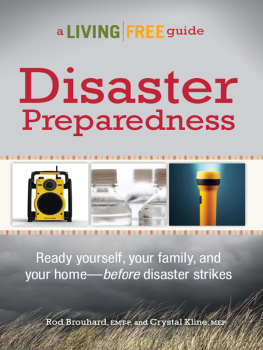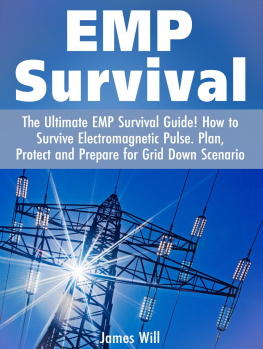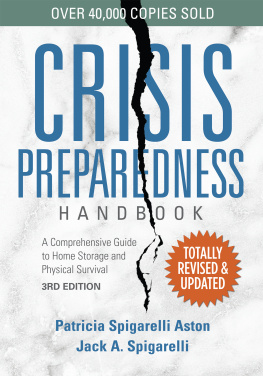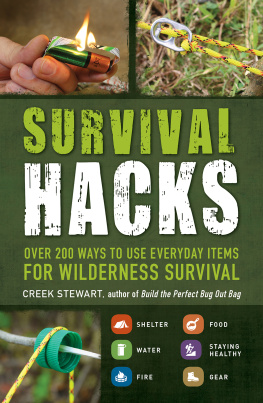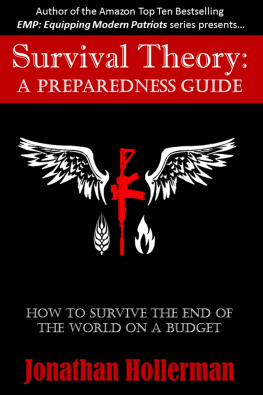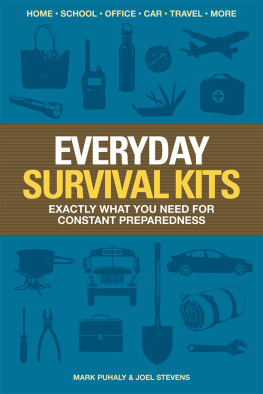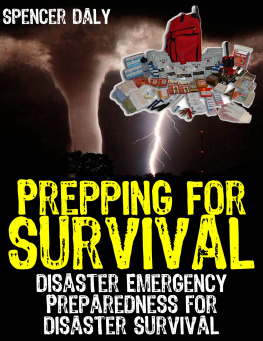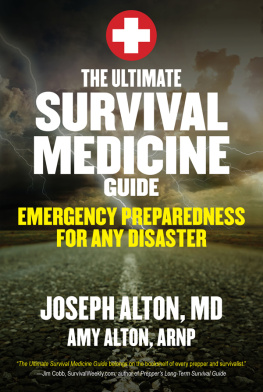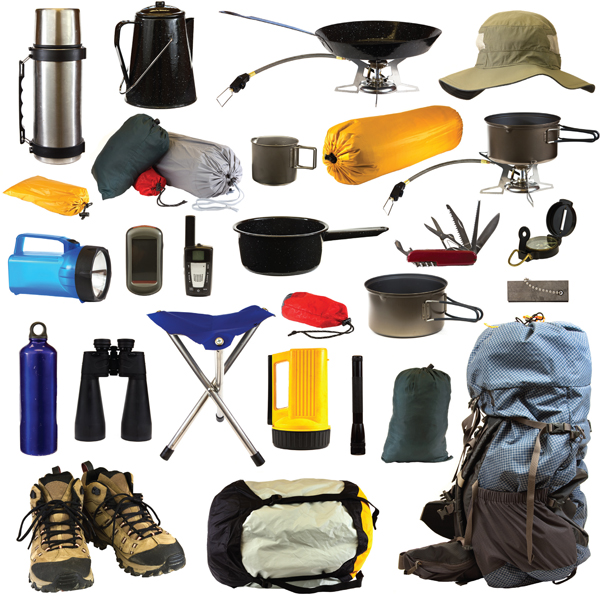Contents
Guide
The Family Preparedness Buyers Guide
The Best Survival Gear, Tools, and Weapons for Your Skills and Budget
Editors of Living Ready
Living Ready Books
Iola, Wisconsin
LivingReadyOnline.com
Contents
Introduction
Preparedness requires you to ask yourself many difficult questions. How would my family survive with no power or water for a week? Where would I go if a storm or fire destroyed my home? How would I collect my children from school in the midst of a security emergency?
Preparedness also allows you to remove some of the fear brought on by these questions. When you identify the potential threats and emergencies you may some day face, you can construct well thought-out responses that will help you survive, and maybe even thrive, despite the chaos around you.
One of the keys to being prepared is to have the things you need for survival well ahead of an emergency or disaster. This book will help you identify the survival supplies and gear you need to complete your family preparedness plans.
The feature articles in each chapter explain the importance of each type of gear and demonstrate how to effectively use it in survival situations. The Buyers Guides in each chapter list specifications for dozens of survival products so you can quickly and easily compare among various manufactures and models. Products are listed in order by price from least expensive to most expensive (based on MSRP at time of printing) so you can evaluate what you are getting for your money and choose the gear that is best for your needs, your skills, and your budget.
When you are prepared, youre not just hoping for the best, youre planning for the best possible outcome no matter what life throws at you.
CHAPTER ONE: SURVIVAL KITS
MONTICELLO/SHUTTERSTOCK.COM
Survival kits are an essential part of any preparedness plan. When a disaster strikes, you dont want to be caught empty handed. This chapter explains the many types of emergency survival kits you will want to build including home survival kits, go bags, everyday carry gear, and of course, bug out bags. Vehicle kits are also coveredand not just for cars. Kits for trucks, ATVs, and boats are also included.
While building your own kits is ideal (you can customize each kit for your specific needs), there are many pre-assembled survival kits on the market and the Buyers Guide to Prepackaged Survival Kits found in this chapter details the contents of many of these kits. Use this information to decide which kit is right for you, or use it as a guide for what to include in your own custom-built kit. You could also use a pre-made kit as the core of your survival kit and add to it to meet all of your unique survival needs.
30 Items for a Home Survival Kit
PHOTOEXPERT /SHUTTERSTOCK.COM
By Pat McHugh
This home survival kit can help you in a bug-in situation or you can easily grab it on your way out of your house if you are in a forced evacuation situation. Store the items for this kit in a 5-gallon bucket that has a lid (available at home improvement stores). A small plastic trash can with a good lid and handles also works. Place tape on the bucket and mark on the tape the date you last filled it with the items below. The contents of the kit need to be inspected and/or rotated and replaced every three to six months.
6 Home Survival Kit Essentials Youll Forget
Think fast. The time it took to read that sentence is how long youll have to think when disaster hits. If you have a survival kit already prepared, youre doing better than most people.
However, there are five essential items that wont be in that home survival kit because you use them every day. Dont forget them.
1. Personal Documents
Since you live in a disaster prone area, get all personal papers such as personal identification items, deeds, bank books, check books, insurance papers, agents phone numbers, car titles in one place so you can take them if you have to evacuate. Have them stored in a plastic folder so its a grab and go.
2. Personal Medication
Keep an empty zip-lock poly bag stored inside your medicine cabinet. Place all your personal medications in it and take with you when it is time to evacuate. For help in times of panic, write beforehand on the bag with a marker or make a list of the items you really need to put in this bag when the time comes.
3. Glasses/Contacts
Dont forget your extra set of glasses or contacts.
4. Cell Phone Charger
Most of us have cell phones today, make sure you have a car recharging unit to take with you so you will be able to recharge the phone battery from any car lighter or 12V socket. Electricity outlets may not be readily available for your home plug-in recharger.
5. Extra Set of Clothes
If you have the room in your vehicles trunk, put in an extra set of work type clothes like jeans, t-shirts, and clean socks.
6. A Survival Knife
Unless you carry one every day, the Gun Digest editors recommend keeping a knife set aside just for emergencies. Dont forget it. As they say, your knife is your life. Select a knife that is durable, portable, reliable and affordable. See for more about selecting a survival knife.
Contents for Home Survival Kit:
- Flashlights: At least two of them without batteries inserted.
- Batteries for flashlights: At least 3 sets for each light (watch expiration dates on package)
- Small roll of duct tape
- Pair of work gloves
- Basic tools
- At least four chemical light sticks (8-12 hour variety)
- Portable radio (batteries out)
- Two sets of radio batteries (again, watch the dates)
- Small, basic First Aid kit
- Roll of toilet paper
- Toothbrushes
- Toothpaste
- Small bar of soap
- Washcloths
- Moist towelettes (e.g., Wet Wipes)
- Bottled water (rotate every six months). Stack bottles around perimeter of bucket. Water is heavy, but necessary and could be a scarce commodity in a shelter.
- A 32-oz. wide mouth polycarbonate water bottle (e.g., Nalgene bottle) in case you have to secure water in a shelter. Fill this bottle with as many travel-sized personal toiletries as you can.
- Save a small eyedropper-type bottle and fill it with household bleach (replace every six months). You can use the bleach to disinfect your drinking water. 1 quart water = 2 bleach drops if water is clear, 4 drops if water is cloudy.
- A few high-energy food bars/candy/mints (watch expiration dates)
- Pre-sweetened iced tea packets or drink mix, maybe even some dry soup mix.
- Small pocket stove and solid fuel tablets stored in a metal campers cup to use over the flame.
- Small, hard plastic cups
- Individual packets of sugar, salt and pepper

